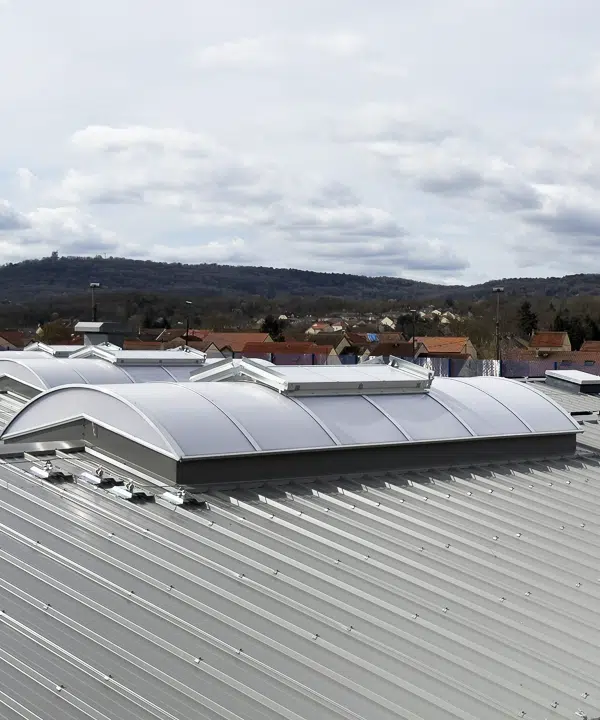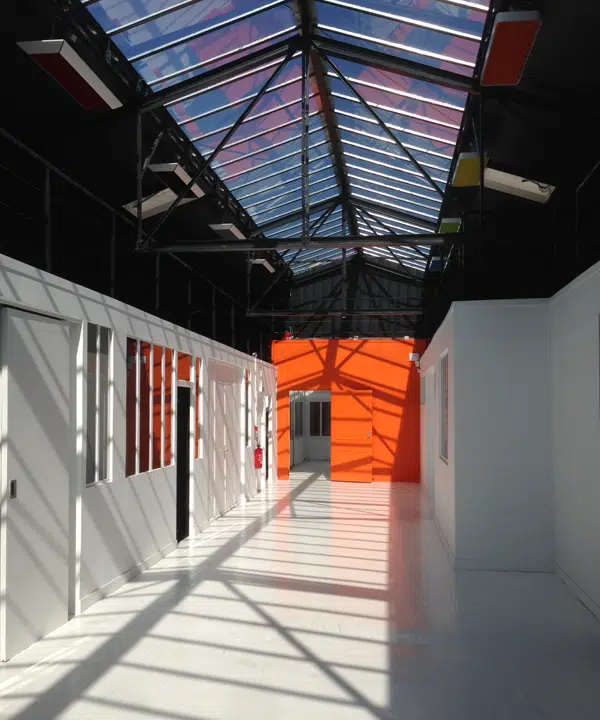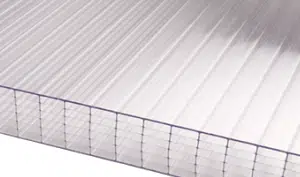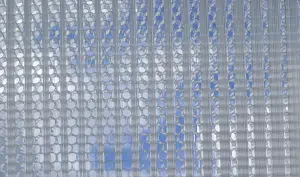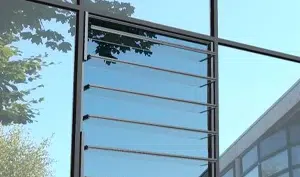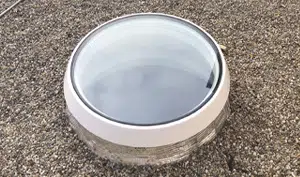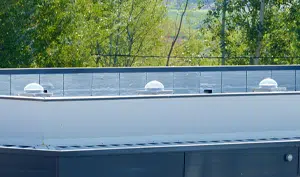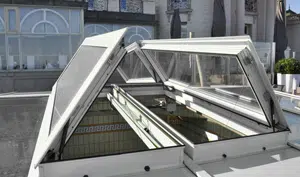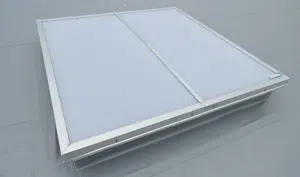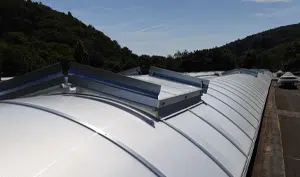
Because artificial lighting accounts for a growing proportion of our energy consumption, we have made natural light the cornerstone of our thinking. The skylight (taking into account the light transmission of the infill) therefore becomes an asset for diffusing natural light.
When we talk about natural lighting, the lighting requirement is expressed in terms of “daylight factor” (DFL). This is also the indicator most commonly used in environmental quality initiatives. The daylight factor is a value that makes it possible to precisely quantify the amount of natural light entering buildings.
Natural light in pictures
on the façade
on the roof
Overcast lighting with diffusing or transparent rooflights.
Overcast lighting with diffusing or transparent rooflights.
Sunlight with transparent rooflight filling.
Benefits & advantages
Renovation : How can thermal insulation and staff comfort be improved ?
Our case study on natural light concerns the renovation of a technical building. Located in the Moselle département, it houses the mechanical workshop and vehicle repair and maintenance shop for the département’s technical services.
The project involves the complete renovation of the roof, with the aim of improving thermal insulation and staff comfort. In addition, the client specifically wanted the roof to be floodedwith natural light.
